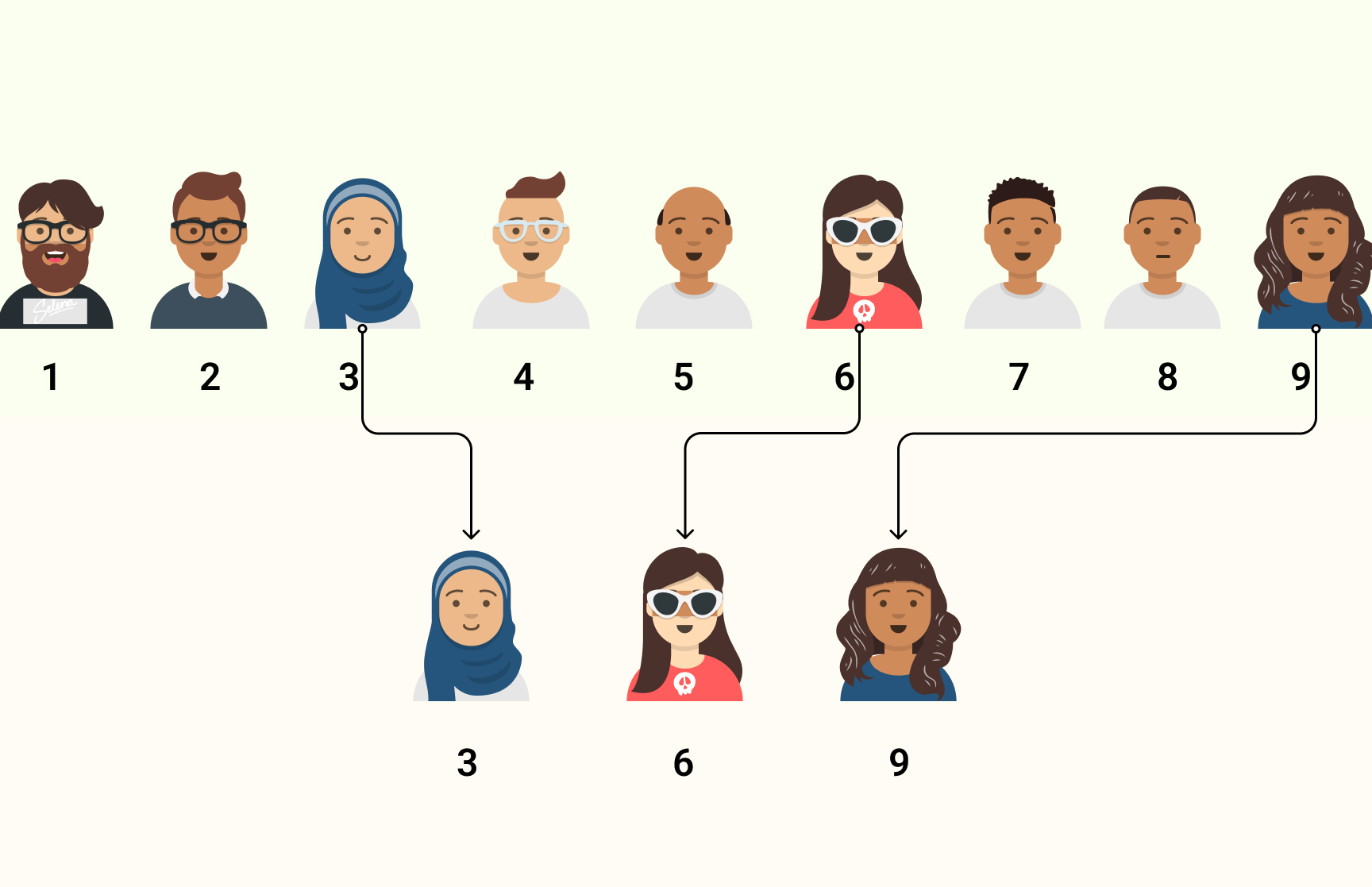

Systematic Sampling
A smaller population may be used to extract a specific number of observations in statistics. We refer to this as sampling. Researchers and statisticians use a variety of sampling procedures, and the choice of sample depends on the sort of analysis being conducted. Sampling strategies are used when it seems that it would take too long to collect data from every person in the population.
One of the best sampling methods is systematic sampling. In this blog, you will learn more about this sampling method.
What is Systematic Sampling?
In probability sampling, some random members of the group are chosen to be a part of the sample at regular intervals. Systematic sampling is used for probability sampling. In this sampling method, the target population is selected by the researcher using statistical techniques. By dividing the whole population by the necessary sample size, the sampling interval can be computed.
By choosing a random beginning point, researchers may choose desirable components from a target population. After that, a set sample interval is followed by the selection of sample members.
For instance, if a school has a population of 5000 kids and wishes to create a systematic sample of 500 students from that population for a volunteer activity, they may choose every tenth student from that group.
Unlock Unlimited Surveys & Responses with Fynzo Survey – 99% Features Free Forever!
⭐ Rated #1 Trending Survey Tool by Software Suggest ⭐
Why Choose Fynzo Survey?
- Unlimited Surveys: Create as many surveys as you need without any limits.
- Unlimited Responses: Collect unlimited responses effortlessly.
- 99% Free Features: Access nearly all our powerful features for free, forever.
- User-Friendly: Easy setup, create your survey in minutes.
Uses of Systematic Sampling
Both scholars and businesses may benefit greatly from using systematic sampling method in statistics. The following lists the principal applications for systematic sampling:
1. Implementation that is simple
Intervals between samples are necessary for systematic sampling. As a result, even if the original population is large, statisticians and researchers may easily manage the sample. Due to the periodic structure of the sampling, it takes less time to produce the sample and has a relatively low budget.
2. Broad topic
A large sample reduces the possibility of data tampering. In these circumstances, systematic sampling may be employed.
3. Budgetary limitations
When there are financial constraints, systematic sampling is preferable to a simple random sample. This facilitates straightforward investigations and aids in the achievement of study objectives.
4. No data pattern is present
Analyses may be conducted objectively if the data is not in any specific order. Such situations allow for the use of systematic sampling, which is a very helpful technique.
Types of Systematic Sampling
Three different kinds of systematic sampling exist. The following provides information on these kinds.
Unlock Unlimited Surveys & Responses with Fynzo Survey – 99% Features Free Forever!
⭐ Rated #1 Trending Survey Tool by Software Suggest ⭐
Why Choose Fynzo Survey?
- Unlimited Surveys: Create as many surveys as you need without any limits.
- Unlimited Responses: Collect unlimited responses effortlessly.
- 99% Free Features: Access nearly all our powerful features for free, forever.
- User-Friendly: Easy setup, create your survey in minutes.
1. Systematic Random Sampling
Samples are chosen via systematic random sampling at a predetermined period. Below are the instructions for setting up a systematic random sample.
- The sample interval has been computed and is set. To do this, divide the population’s total element count by the sample’s minimum element count.
- Between 1 and the sampling interval, a point at random is selected for sampling.
- The next items are chosen by repeating the sample interval.
2. Linear Systematic Sampling
The samples in linear systematic sampling are not repeated at the conclusion. The sample, which has “N” population units, is chosen to contain “n” units. A researcher may choose the units with the use of skip logic rather than at random.
Skip interval = total population units/sample size
k = N/n
The sample then travels in a straight line. It comes to an end with a certain population. Below are the instructions for setting up linear systematic sampling.
- There is a categorized sequence used to organize the total population.
- The chosen sample size is (n).
- N/n is used to determine the sample interval (k).
- Between 1 and k, a random number is selected between 1 and k, with k included.
- The selected random number is increased by k. This is done to include the newest participant in the sample. To include the other participants in the sample, the process is repeated.
- The next closest integer may be picked if the value of k is not an integer.
3. Circular Systematic Sampling
The conclusion of a sample serves as a fresh start in circular systematic sampling. Below are the instructions for setting up circular systematic sampling.
- Using N/n, the sampling interval (k) is computed.
- Between 1 and N, a random beginning point is chosen between 1 and N.
- Every time a population member is chosen, k units are skipped in order to make samples.
- Instead of k samples as in linear systematic sampling, there will be N samples in this method of sampling.
- When N = 11 and n = 2, k is assumed to be 5 rather than 6.

Unlock Unlimited Surveys & Responses with Fynzo Survey – 99% Features Free Forever!
⭐ Rated #1 Trending Survey Tool by Software Suggest ⭐
Why Choose Fynzo Survey?
- Unlimited Surveys: Create as many surveys as you need without any limits.
- Unlimited Responses: Collect unlimited responses effortlessly.
- 99% Free Features: Access nearly all our powerful features for free, forever.
- User-Friendly: Easy setup, create your survey in minutes.
Systematic Sampling Advantages and Disadvantages
Since systematic sampling is fairly straightforward and has several benefits over other sampling approaches, it is employed by many researchers and analysts.
The following are some benefits of systematic sampling:
- Researchers can easily produce and analyze samples with surveys based on systematic sampling since it is practical and easy to utilize. Try surveying for yourself now.
- It is quick and easy since it is not necessary to number each member of a sample.
- Because the samples were developed by careful member selection, they are impartial.
- Other probability sampling techniques include cluster sampling and stratified sampling, as well as non-probability techniques like convenience sampling. Because there is a possibility of favoritism in the selection of samples, these approaches are problematic. In systematic sampling, partiality is avoided by maintaining members at a set distance from one another.
- Systematic sampling involves very little risk.
- This kind of sampling is advantageous when there are various people in the sample since they are uniformly dispersed.
The following list includes the drawbacks of systematic sampling:
- It is quite important to organize the list that will be utilized throughout the sample period. The chosen sample may be skewed if the list is organized in a cyclic manner that corresponds to the sampling interval.
- During systematic sampling, it is necessary to determine the size of the population. Systematic sampling will not be effective if the population’s element count is unknown.
- The population must display a certain level of randomness naturally. Otherwise, there is a chance of selecting pieces that are similar. Consequently, the value of systematic sampling is reduced.
Sampling techniques, both with and without a population list
1. When a population list is used:
To guarantee that one obtains a legitimate sample, one should take into account the order in which the population is listed.
If the population is arranged in either ascending or descending order, systematic sampling may be carried out without difficulty since it will include people from both the top and bottom of the population. For instance, if a population is sorted by age, the sample will include people of all ages.
The resulting sample won’t be representative if the population is sampled cyclically or on a regular basis.
In periodic lists, for instance, if the population alternates between men and women and if a decision must be made after a gap of 10 members, the sample will either be made up entirely of males or entirely of females.
In cyclic lists, the sample will consist of the same age demographic if the population is divided into departments and sorted by age. This is because the needed member age for each department will be comparable.
2. When a population list is not used:
If a population list is not available, the population may be randomized, as in simple random sampling.
Conclusion
Researchers and analysts are able to draw a tiny sample from a broader population thanks to it. This decision might be based on a number of variables, including age, gender, geography, etc. Most often, sociology and economics are the subjects that use such statistical sampling.
It may be quite simple, and it also allows analysts and researchers more control. Even the deletion of cluster selection may benefit from it. There is a very minimal chance of mistakes and data manipulation when using this kind of statistical procedure. The procedure is very well-liked and favored by the majority of statisticians since it is straightforward.
FAQs
1. What is the difference between stratified and systematic sampling?
Data collection in an organized manner is known as systematic sampling. While dividing the sample into groups is known as stratified sampling.
2. What does the inventory turnover ratio serve?
This kind of sampling eliminates any potential for bias on the part of the researcher while selecting the sample.








